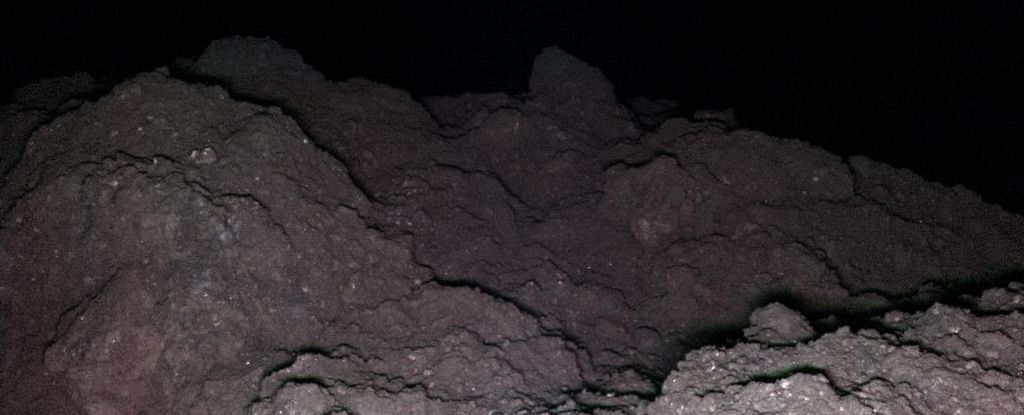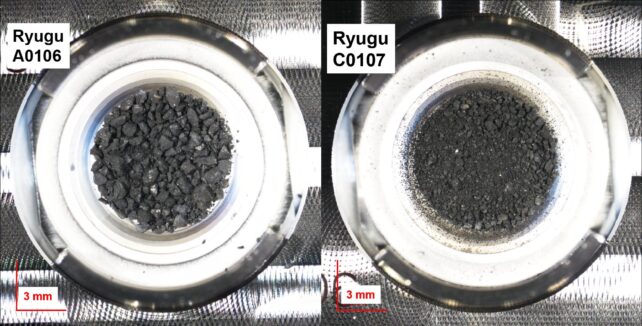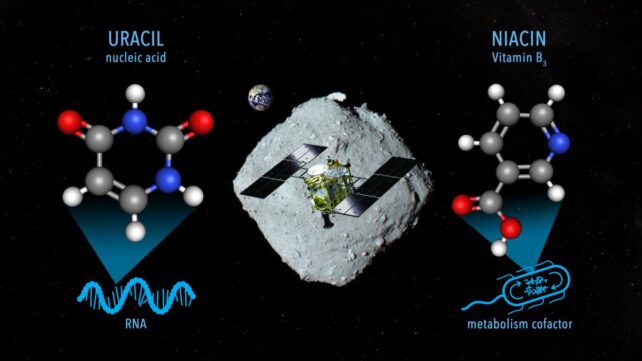Scientists discover an RNA component embedded in asteroid dust
- March 21, 2023
- 0
A sample from an asteroid far from Earth confirmed that RNA nucleobases can be found in space rocks. Analysis of the dust brought home from the asteroid Ryugu
A sample from an asteroid far from Earth confirmed that RNA nucleobases can be found in space rocks. Analysis of the dust brought home from the asteroid Ryugu

A sample from an asteroid far from Earth confirmed that RNA nucleobases can be found in space rocks. Analysis of the dust brought home from the asteroid Ryugu found that it contains uracil, one of the four nucleobases that make up RNA, in addition to niacin, a form of vitamin B3 that plays an important role in metabolism. This adds to the growing evidence that the building blocks for life formed in space and may have been brought to Earth, at least in part, by an asteroid bombardment early in our planet’s history.
“Scientists have previously found nucleobases and vitamins in some carbon-rich meteorites, but there has always been a problem of contamination from Earth’s environment,” says astrochemist Yasuhiro Oba of Hokkaido University in Japan.
“The possibility of contamination is negligible, as the Hayabusa2 spacecraft collects two samples directly from the asteroid Ryugu and delivers them to Earth in sealed capsules.”
How life arose and how common this appearance might be in the Milky Way galaxy are two questions humanity is wondering about. One way to question these is to find the building blocks of life in space and explore possible mechanisms for their transport from here to there.
As we are discovering more and more, there are many building blocks for life. They were seen in clouds of planet-forming dust and star-forming dust surrounding the heart of our galaxy. And they were found in many meteorites that entered the Earth’s atmosphere and fell to the ground.
Taken together, the evidence suggests that the building blocks of life may indeed be aliens…but the certainty remained unclear until scientists ruled out the entry of Earth material into space rocks after they got here. To find out what happens in the intact samples Hayabusa2 brought from Ryugu, Oba and colleagues applied a new technique they had developed for the small-scale detection and identification of small amounts of nucleobases.

The team immersed two samples from different parts of the asteroid in hot water and subjected them to high-performance liquid chromatography in conjunction with high-resolution electrospray ionization mass spectrometry. This technique, applied to the Murchison meteorite that crashed to Earth in 1969, yielded all five canonical nucleobases.
The range of biomolecules found in Ryugu is smaller, but still important, the researchers said.
“We found uracil in the samples in small amounts, in the range of 6-32 parts per billion (ppb), while vitamin B3 was more abundant in the 49-99 ppb range,” says Oba. “Other biological molecules were found in the sample, including a number of amino acids, amines, and carboxylic acids, which are found in proteins and metabolism, respectively.”

The compounds discovered, combining about 20 amino acids previously found in Ryugu samples, are different from, but generally similar to, those found in other carbon-rich meteorites that fell to Earth. This suggests that biomolecules may be quite common in carbonaceous meteorites and may have been attached to Earth during the bombardment.
As for how they got to the asteroids, scientists believe the nitrogen-containing compounds may have formed from simpler molecules, including formaldehyde, ammonia, and hydrogen cyanide. They were not found in the Ryugu specimens, but probably were present if the asteroid or main body was an ice-covered comet early in its history that was rich in these molecules. But Ryugu is just the beginning. NASA has collected a sample from another asteroid, Bennu, and is sending it to Earth for analysis. Early research suggests that it also contains organic matter that corresponds to the building blocks of life.
“The discovery of uracil in Ryugu samples strengthens existing theories about the origin of nucleobases on early Earth,” says Oba. “NASA’s OSIRIS-REx mission will return samples from the asteroid Bennu this year, and a comparative study of the composition of these asteroids will provide additional data to support these theories.”
Source: Port Altele
As an experienced journalist and author, Mary has been reporting on the latest news and trends for over 5 years. With a passion for uncovering the stories behind the headlines, Mary has earned a reputation as a trusted voice in the world of journalism. Her writing style is insightful, engaging and thought-provoking, as she takes a deep dive into the most pressing issues of our time.